Looking to increase the temperature in your wood stove pipe? You’ve found the right spot.
In this article, I’ll share some expert tips and tricks on how to make your wood stove pipe hotter.
From understanding the science behind heat production to ensuring proper airflow, choosing the right wood and fuel, and optimizing efficiency with insulation, I’ll guide you through the steps to keep that pipe sizzling hot.
Let’s get started!
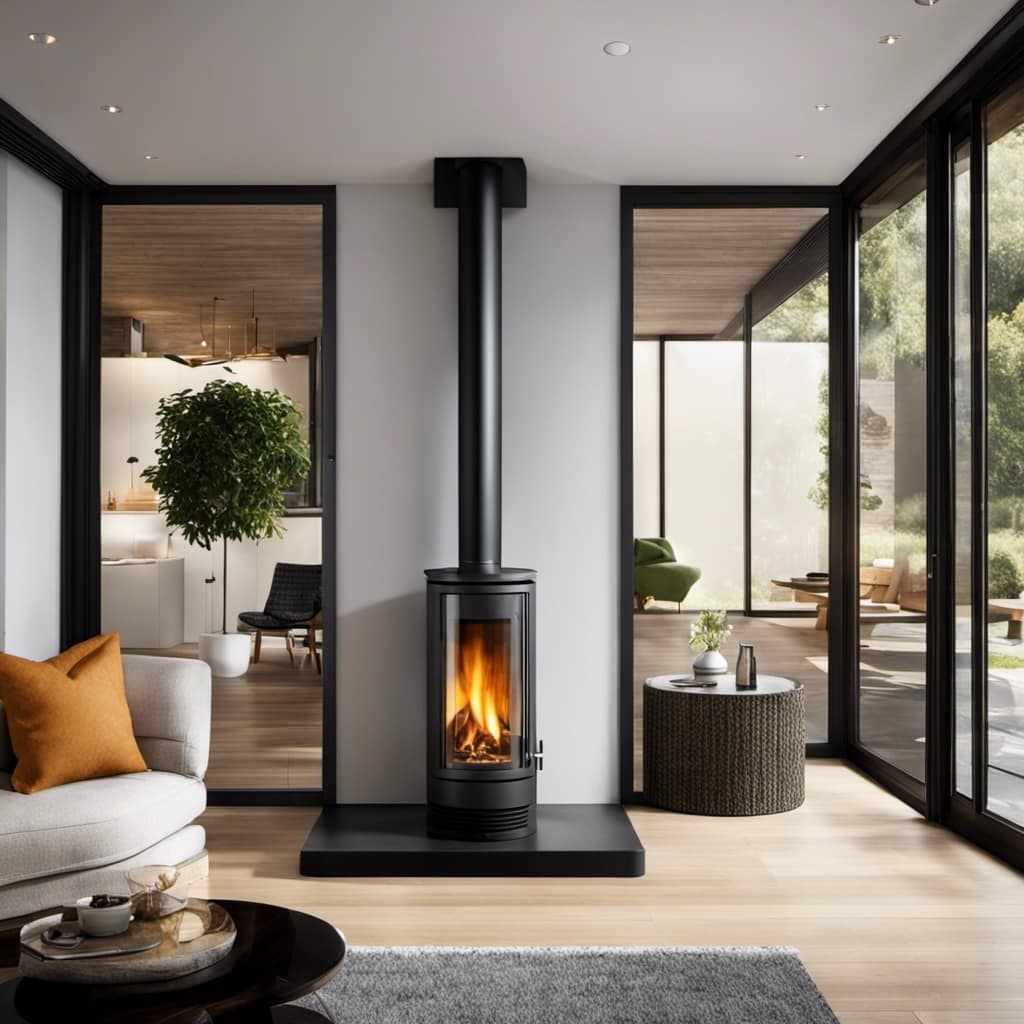
Key Takeaways
- Controlling airflow regulates combustion rate and heat output.
- Choosing the right wood and fuel maximizes wood stove pipe heat.
- Insulating wood stove pipe prevents heat loss and increases heat circulation.
- Regular cleaning and maintenance keep wood stove pipe hotter and more efficient.
Understanding the Science Behind Heat Production in Wood Stove Pipes
I can increase the heat in my wood stove pipe by understanding how the science behind heat production works.
When it comes to airflow management, it’s crucial to have a proper understanding of the process. By controlling the amount of air that enters the stove, I can regulate the combustion rate, which directly affects the heat output. It’s important to strike a balance between too much and too little airflow to maximize the heat production.
Heat transfer mechanisms also play a significant role in increasing the temperature in the stove pipe. Radiation, conduction, and convection are the main methods through which heat is transferred from the burning wood to the surrounding environment. By optimizing these mechanisms, I can ensure that the heat is efficiently transferred to the stove pipe, making it hotter.
Ensuring Proper Airflow for Increased Heat in Your Wood Stove Pipe
To increase the heat in my wood stove pipe, I need to ensure proper airflow by both controlling the amount of air and optimizing heat transfer mechanisms. Maximizing ventilation is crucial in achieving this goal. Here are three techniques to consider:
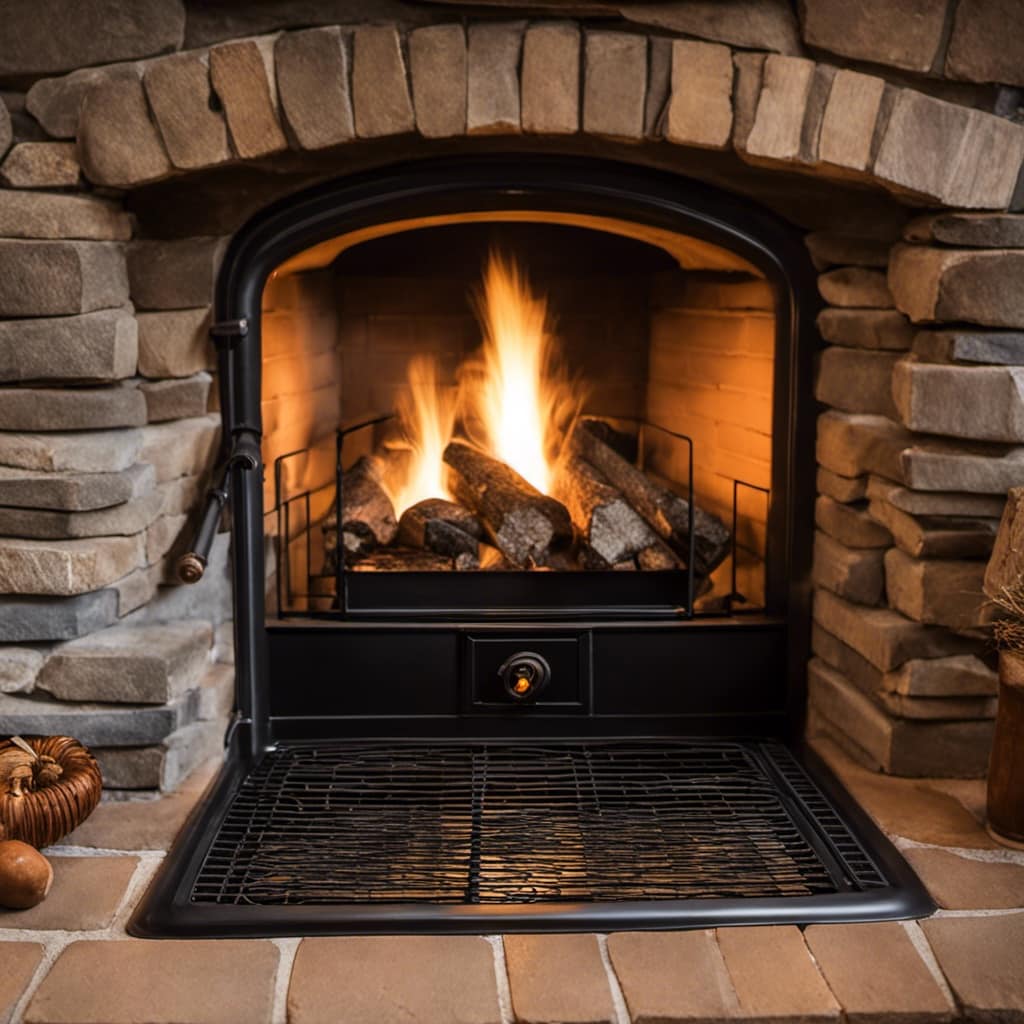
Installing a damper: A damper allows you to regulate the amount of air entering the stove, allowing for better control over the combustion process and heat output.
Using a heat-powered stove fan: These fans are designed to improve heat distribution by circulating warm air throughout the room. They operate using the heat generated by the stove, requiring no additional power source.
Utilizing heat reflectors: Placing heat reflectors behind the stove can help redirect heat into the room, preventing it from being absorbed by the wall.
By implementing these heat distribution techniques, you can maximize the efficiency of your wood stove pipe.
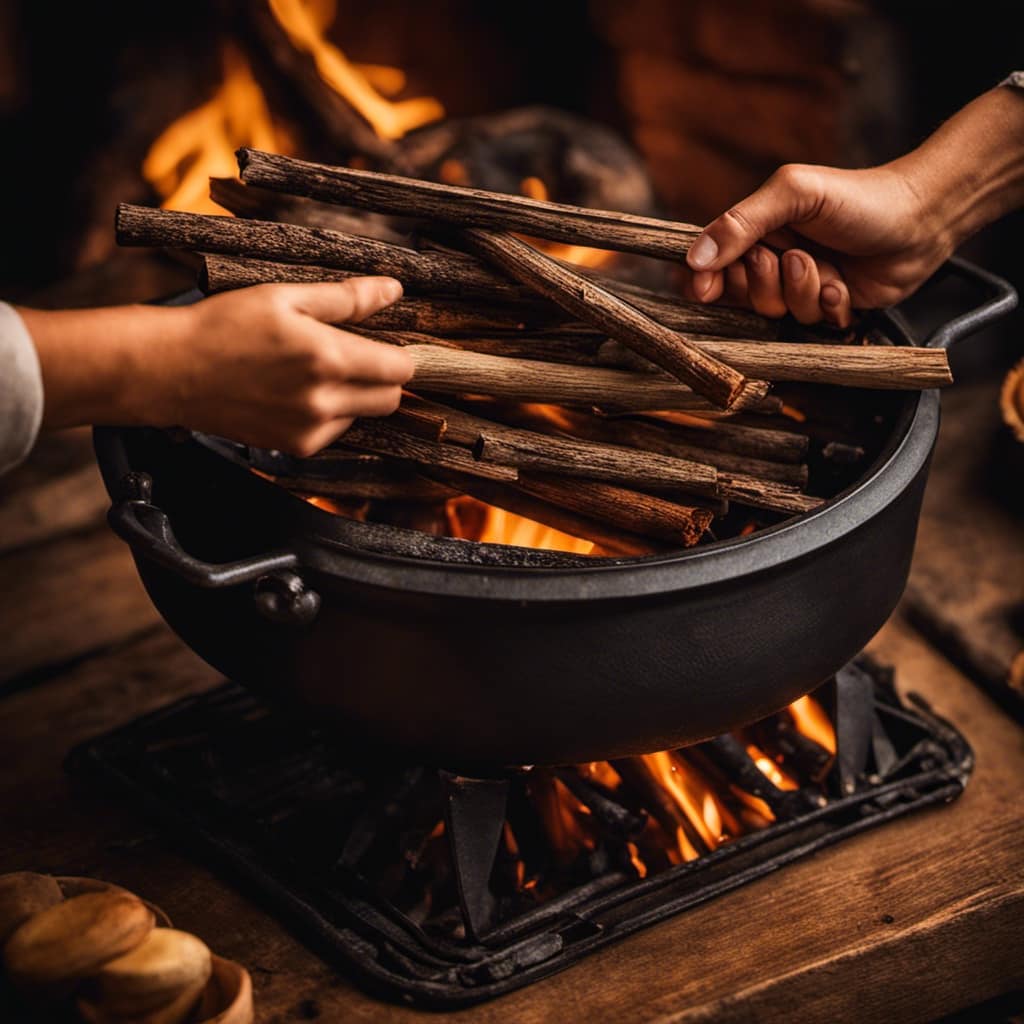
Now, let’s delve into the next section and explore the importance of choosing the right wood and fuel for maximum heat output.
Choosing the Right Wood and Fuel for Maximum Heat Output
When it comes to maximizing heat output, it’s important to consider the type of wood and fuel you choose. Choosing the best wood for a hotter fire can greatly enhance the efficiency of your wood stove. Hardwoods such as oak, maple, and birch are excellent choices as they burn hotter and longer compared to softwoods like pine and fir.
Additionally, using properly seasoned wood is crucial for maximum heat output. Seasoned wood has a lower moisture content, which allows it to burn more efficiently and produce more heat.
Furthermore, employing techniques for increasing heat output in wood stoves can also be beneficial. This includes ensuring proper airflow by keeping the air vents open and using a damper to control the intensity of the fire.
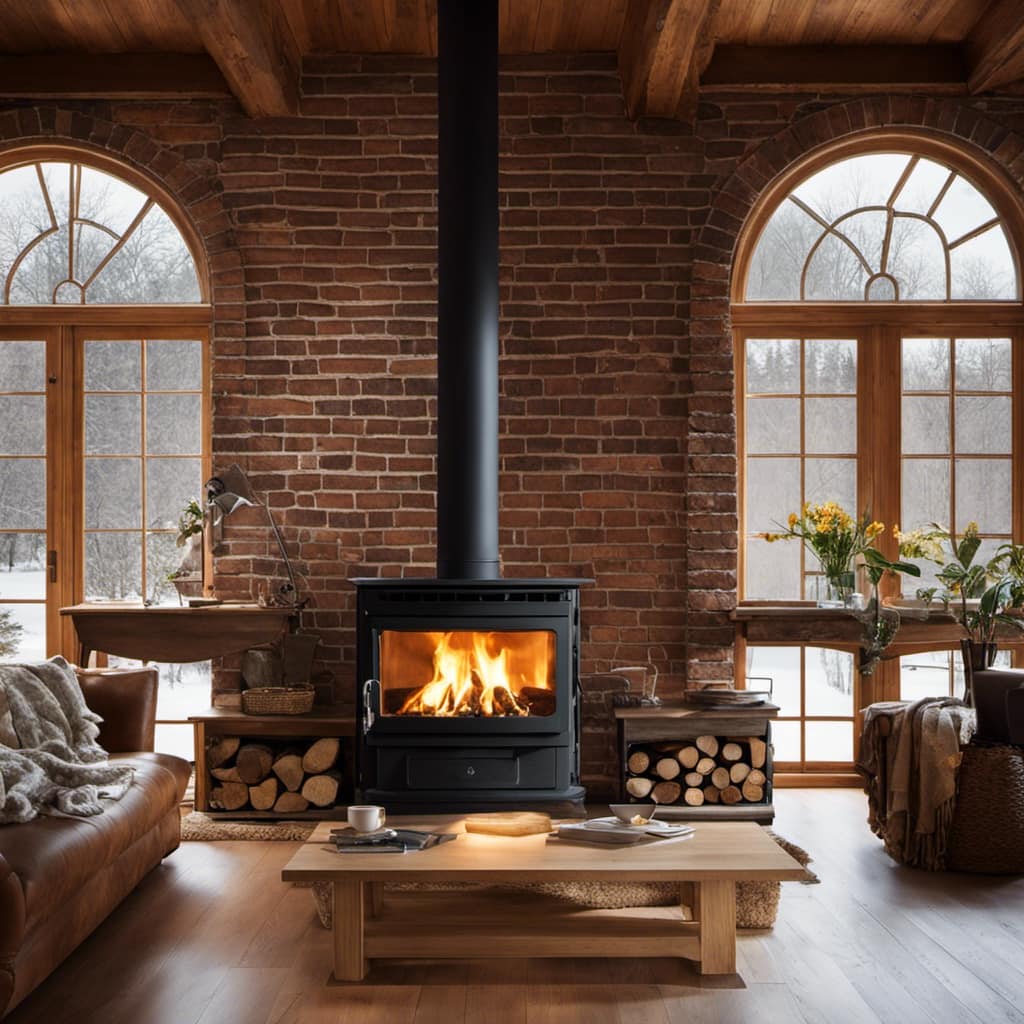
Optimizing the Efficiency of Your Wood Stove Pipe With Insulation
Insulating your wood stove pipe can greatly improve its efficiency by preventing heat loss and increasing the frequency of heat circulation. This is crucial for maximizing the heat output and getting the most out of your wood stove.
To ensure insulation effectiveness, it’s important to choose the right type of insulation material. Here are three options to consider:
Fiberglass insulation: This is a commonly used material due to its excellent thermal resistance and affordability. It’s easy to install and provides effective insulation for your wood stove pipe.
Ceramic insulation: This type of insulation is highly durable and can withstand high temperatures. It’s ideal for wood stove pipes that operate at extreme heat levels and require long-lasting insulation.
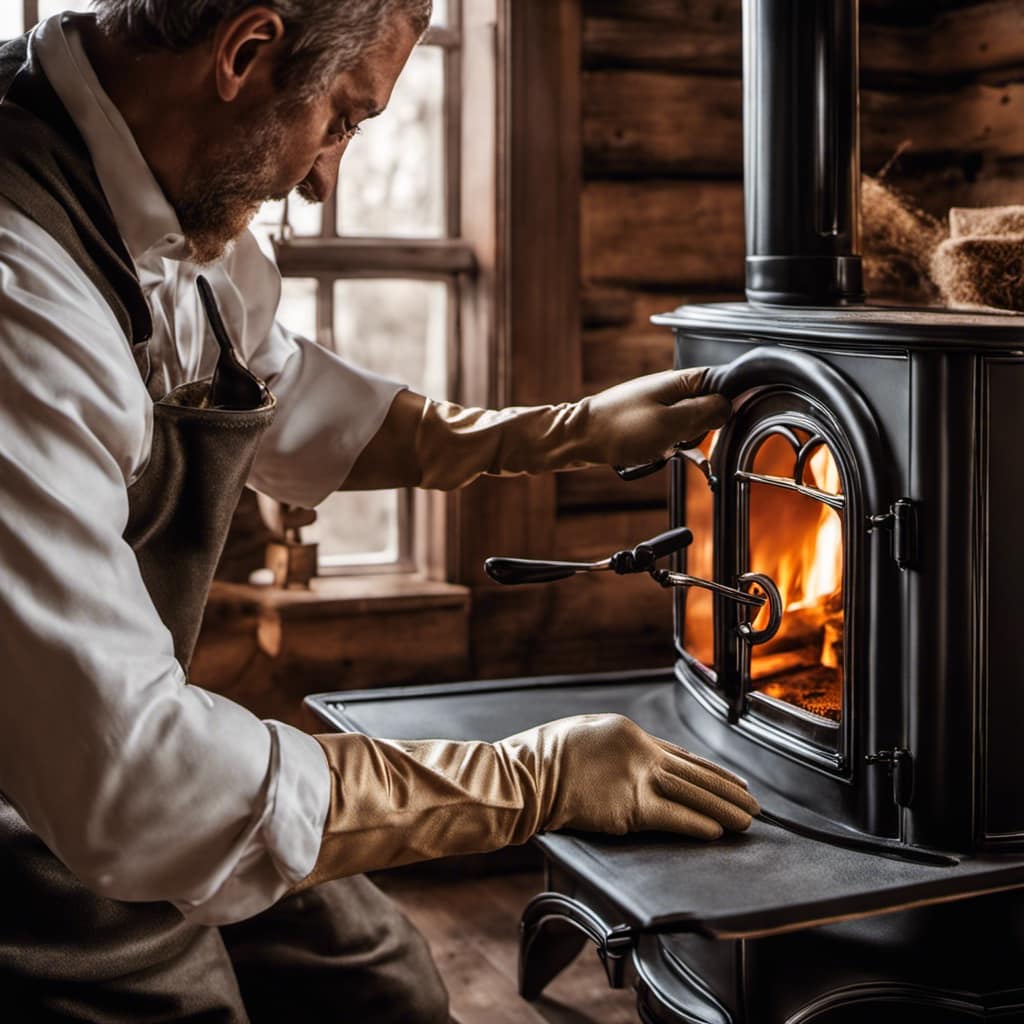
Rock wool insulation: Made from natural rock fibers, this insulation material is fire-resistant and offers excellent thermal insulation properties. It’s a reliable choice for insulating wood stove pipes.
Regular Maintenance and Cleaning to Keep Your Wood Stove Pipe Hotter
I find that regularly cleaning and maintaining my wood stove pipe keeps it hotter and more efficient. Preventing creosote buildup is crucial for maintaining the optimal performance of the wood stove pipe. Creosote, a byproduct of burning wood, can accumulate in the pipe over time, reducing its efficiency and increasing the risk of chimney fires. To prevent creosote buildup, I recommend using a stove thermometer to monitor the temperature of the stove and ensure it is operating within the optimal range. Additionally, cleaning the pipe regularly, typically once a year, is essential. This can be done by using a chimney brush to remove any creosote or debris. By following these maintenance practices, you can keep your wood stove pipe hotter and more efficient, ensuring a safe and warm environment in your home.
| Column 1 | Column 2 | Column 3 |
|---|---|---|
| Regular Maintenance | Prevent Creosote buildup | Use a Stove Thermometer |
| Cleaning the pipe | Monitoring temperature | Ensuring efficiency |
| Removing debris | Reducing fire risk | Maintaining performance |
How Can I Increase the Temperature of My Wood Stove Pipe to the Ideal Level?
To increase the wood stove pipe temperature to the ideal level, there are a few methods you can try. Firstly, ensure the stove is burning efficiently. Consider using well-seasoned firewood, adjusting the air intake, or installing a stove fan to improve circulation and raise the temperature of the wood stove pipe.
Frequently Asked Questions
Can I Use Any Type of Wood in My Wood Stove Pipe to Increase Heat Output?
I can use a variety of wood species in my wood stove pipe to increase heat output. Additionally, I can explore alternative fuels that are compatible with my stove to achieve a hotter burn.
Are There Any Specific Types of Insulation That Work Best for Optimizing the Efficiency of a Wood Stove Pipe?
To optimize the efficiency of a wood stove pipe, it’s important to properly insulate it. Different types of chimney liners, such as stainless steel or aluminum, can help retain heat and improve overall performance.
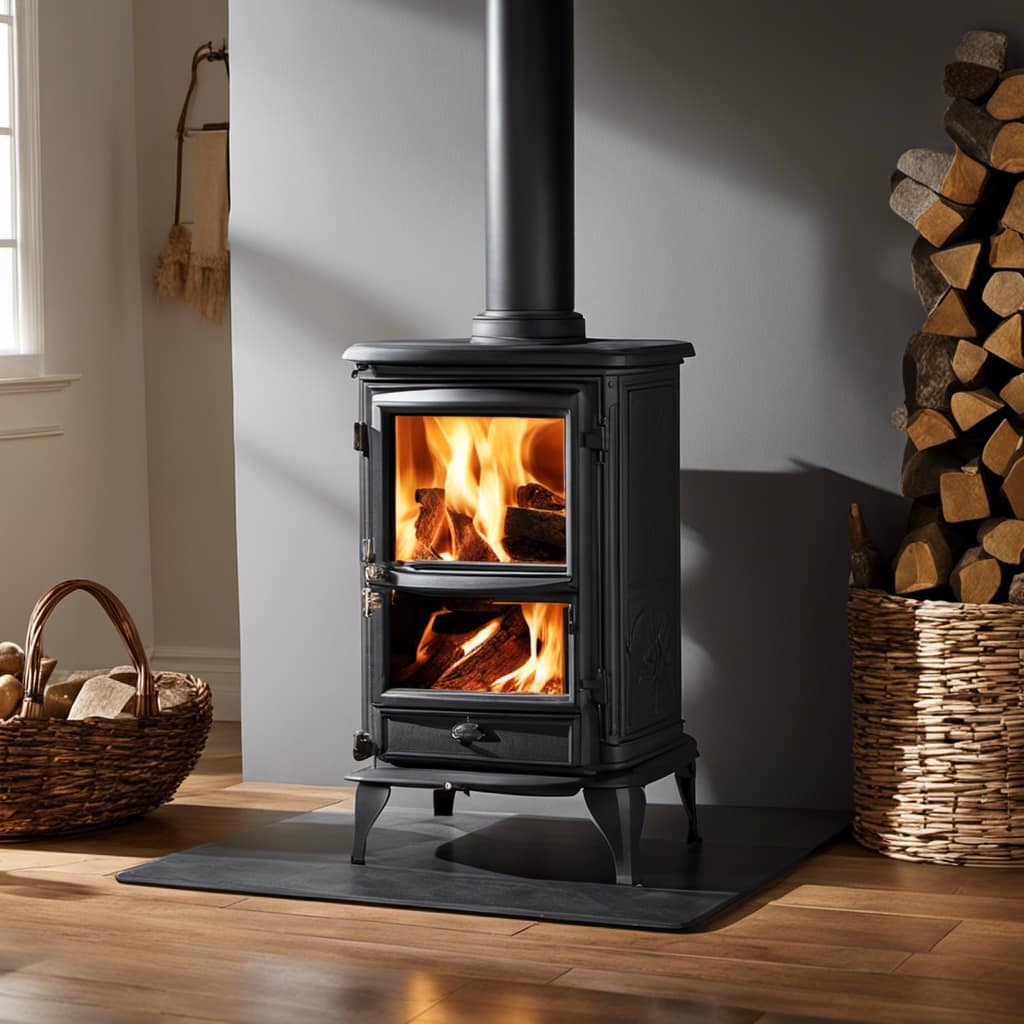
How Often Should I Clean My Wood Stove Pipe to Maintain Maximum Heat Production?
To maintain maximum heat production in your wood stove pipe, it is important to clean it regularly. Cleaning frequency depends on usage, but a general rule of thumb is to clean it at least once a year. Regular cleaning helps remove creosote buildup, improving efficiency.
Can I Use a Fan to Increase the Heat Output of My Wood Stove Pipe?
Using a fan or blower can increase the heat output of a wood stove pipe. However, it’s important to consider alternative heat sources as well, such as using a more efficient wood burning stove.
Are There Any Additional Methods or Techniques to Make My Wood Stove Pipe Hotter That Are Not Mentioned in the Article?
Alternative methods and techniques to make a wood stove pipe hotter can be achieved without using fans. By optimizing airflow, insulating the pipe, and using a damper, the heat output can be increased effectively.
Conclusion
In conclusion, by understanding the science behind heat production, ensuring proper airflow, choosing the right wood and fuel, optimizing insulation, and regularly maintaining and cleaning your wood stove pipe, you can achieve a hotter and more efficient heating system.

Interestingly, studies have shown that properly insulated wood stove pipes can increase heat output by up to 20%. So, investing in insulation can significantly improve the performance of your wood stove pipe and enhance the comfort of your home.
Growing up surrounded by the vast beauty of nature, Sierra was always drawn to the call of the wild. While others sought the comfort of the familiar, she ventured out, embracing the unpredictable and finding stories in the heartbeat of nature.
At the epicenter of every remarkable venture lies a dynamic team—a fusion of diverse talents, visions, and passions. The essence of Best Small Wood Stoves is crafted and refined by such a trio: Sierra, Logan, and Terra. Their collective expertise has transformed the platform into a leading authority on small wood stoves, radiating warmth and knowledge in equal measure.











